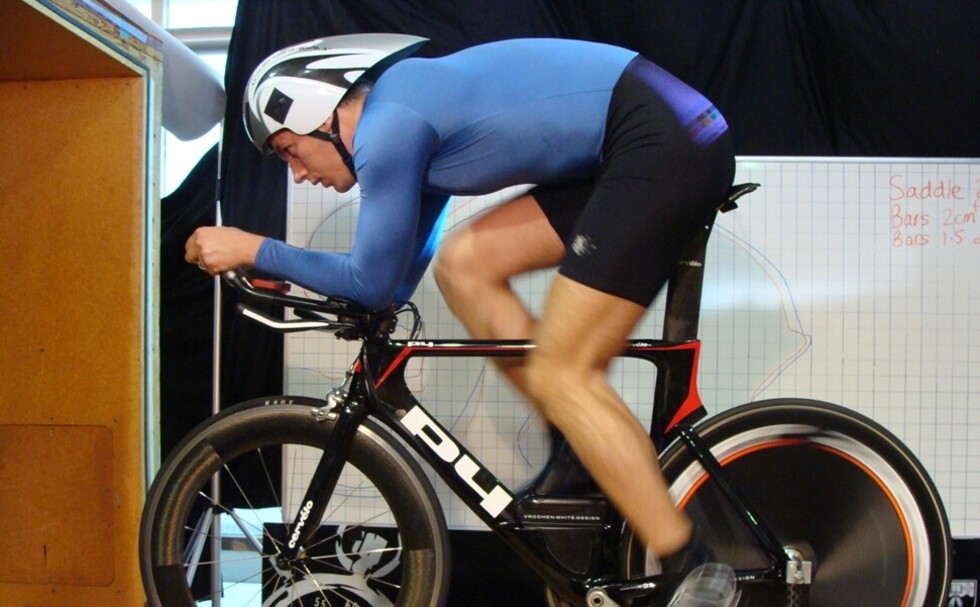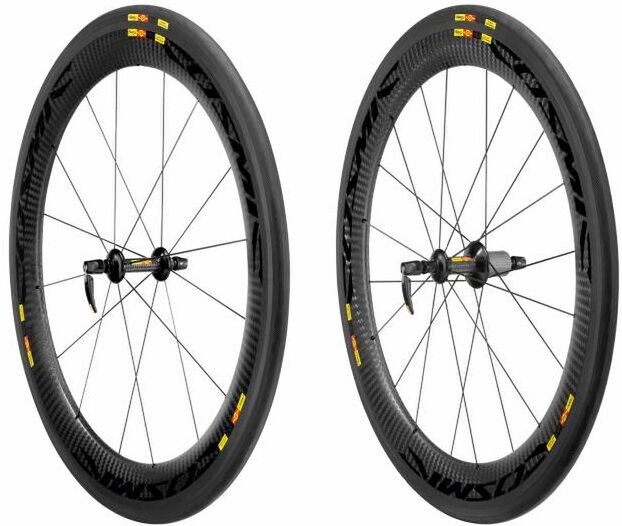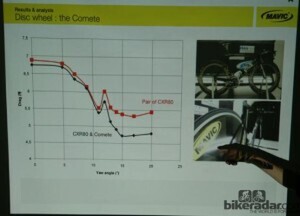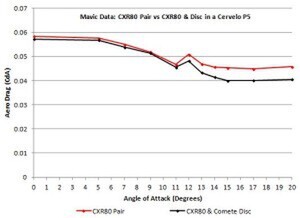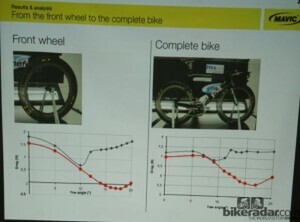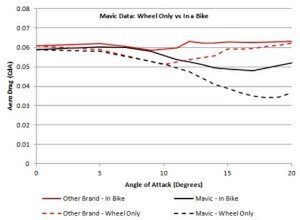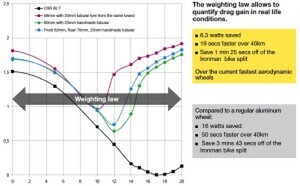Following on from the release of the CXR80 wheels Mavic have brought the technology to both a shallower depth and a clincher model. Given that they’re 60mm deep they’ve logically named them the Mavic CXR60. Additionally they’ve released some really interesting supporting data.
So I’m also going to discuss the supporting data as it adds useful information to the body of publicly available knowledge. As well as taking an holistic approach to examining the performance of the wheelsets used in Mavics testing for this project.
Firstly – the CXR60s.
- Bikerumour
- Cyclingnews
- Additionally, since I wrote this article, Tom Anhalt has written a piece for Slowtwitch with better details and explanation than you will ever get from sports journalists
Salient points that catch my eye:
- A lot of windtunnel time – Mavic really have upped their game
- Follow on from the R&D that went into CXR80
- Max width 27mm but clincher still has a 13mm internal dimension (like old, narrow rims)
- Clincher has a metal braking surface (big plus) but is Exalith coated so may squeal
- The quest for low weight has been abandoned in favour of aero (more proof that they actually did research)
- Their own brand Tubular & Clincher tyres are different widths to ensure good performance in each instance – this is either an impressive level of attention to detail or an illustration of the difficulty of controlling tyre width in manufacturing
- They’ve focussed on stability (not getting blown around by crosswinds) to make the wheels easier to handle
I’m impressed by these wheels – they show that Mavic is committed to revising their range towards performance rather that appearance/weight goals. And having a clincher with a metal braking surface that can (possibly) out perform all of the carbon clinchers aerodynamically would be a boon to the market.
Now on to the good stuff…
Tunnel Data
Disc vs 80mm in a Bike
The chart I found most interesting compares the CXR80 pair in a Cervelo P5 to the same bike with a Comete Disc replacing the rear CXR80. You can see on their chart (snipped from bikeradar) that the performance gap between those options is quite small.
Just how small becomes more apparent once we digitise the information from that image and re-plot it without suppressing the zero (notice how their y-axis starts at 4N).
The performance gap at a low Angle of Attack (AoA) is clearly minimal. In fact – over 40km on a low wind (6kph) day for a 60min rider there is a 3 second gain to be had by using the Comete Disc.
If I then bump up the wind to 20kph (a windy day for a TT) so that we’re into a higher average AoA the gap stretches out to 10s. It’s important to note that these figures don’t include the power to rotate the wheel which could alter the comparison.
This isn’t the data that I based my wheel choice for Ironman NZ on – but it is instructive in showing that modern spoked wheels on modern bikes only yield very slight advantages to a rear Disc, especially in light winds.
Note the reference to ‘modern bikes’ – this is an important fact to recognise with the data – Cervelo have always worked hard to shield the rear wheel. And the P5 is the pinnacle of their achievements. The shielding effect from the seat tube on the current crop of top bikes can make up for many sins on the rear wheel. If you are using a frame that doesn’t hug the leading edge of the rear wheel the figures above may not be relevant to you.
It’s been a while since any data has been released showing the interaction between frame and wheel and the influence it has for rear wheel selection so you can (maybe) see why I think this is so useful.
Testing Wheel Only vs In Bike
Another useful piece of data is their test of a wheel on its own (in a fork stand) vs a pair on a bike. The caption on the linked image to the left (on cyclingnews) states that the wheel only testing translates well to the in-bike testing as the “trends and gaps are the same.”
Taking this data and normalising for the same start point bears that statement out fairly well – the divergence in the drag may happen a little earlier when on the bike (in favour of Mavic) though it is hard to tell when they didn’t use the same angles for each test.
But the gap at higher AoA between the Mavic and the unnamed brand clearly narrows once they’re put in a bike. Refer to the comment in the section above regarding rear wheel shielding. Obviously there is also an interaction effect from the air leaving the front wheel and hitting the frame. In the past a common rule of thumb was to factor the rear wheel having 50% of the benefit of the front when looking at wheel only tunnel data. However – this makes it clear that there can be significant variances and that approach would not work in this instance. So be very careful with wheel data that does not include the effect of a frame.
Mavic CXR60 Comparison
Apart from all that interesting data Mavic of course produced pretty graphs showing how much better their new wheels are than everyone else. What is annoying is that they don’t include testing of the CXR60 without the CX01 strip (the aero blade) – not legal for races under UCI rules and I suspect too much of a hassle for many triathletes.
When I discussed the Mavic CXR80 I featured a couple of points that are relevant again. One is the effect of the removal of the CX01 blades (which actually doesn’t make that much difference in the AoA range that I think is most important). The other is that the performance curve for the Zipps still looks different to what we’ve seen from other testing – again suggesting that Mavic purposely choose a tyre that had a negative impact on the performance of the Zipp 404. However – the chart lists the Zipp being fitted with a “tyre from the same brand” which would mean their Tangente model. Which performs adequately on the 404 (though not as well as a Continental GP4000S).
So it seems we’ll have to wait for other data on the relative performance of these products when each is set up optimally. Mavic can hardly be faulted for fitting a Zipp tyre to a Zipp wheel but the curve shape for the 404 is still surprising.
Using the data they’ve supplied for the tubular and clincher versions of the wheels along with tyre rolling resistance data from Al Morrisons testing we can look at the overall performance picture.
Mavic have done some good work in measuring the winds experienced in the real world and come up with a distribution for weighting the wheels performance. In this way they can give an overall average drag.
I (of course) do it a little differently. You or I as an individual isn’t interested in a grand average of all riders in all conditions. What matters is the conditions that you face in the races you do.
The graphs presented here show the total wattage for the selected wheel & tyre for a rider with the conditions in the title (Weight, surface (1.5 = smooth, 4 = rough) and speed). Each AoA is actually an average spread across the near points from the Mavic windtunnel data.
The way to use the graphs is to find one that approximates your situation and then look at the AoA that matters to you – you could use the Hed Yaw Calculator. Or as a basic approach – the faster you go and the less wind the lower the AoA you will face. If your average speed is 30kph or less and you race on windy days you should look at the higher AoA part of the graph.
The Mavic data says “Handmade” clincher and tubular for the Hed and Enve wheels. I’m going to assume this means the Vittoria Evo Corsa as it is a popular tyre that is known to harm the aerodynamics of several wheels (which makes it a great test choice from the Mavic perspective). CRR figures for the Mavic tyres are from pre-CXR Yksion testing (Tom Anhalts testing suggests that the performance has not improved with the CXR versions).
Edit: it turns out that the “60mm Clincher” is actually a Bontrager Aeolus D3 5 fitted with a Bontrager R4 Aero tyre. It doesn’t change anything in the graphs above apart from the mislabelling (which I’ll fix later, preferably post clarification on other tyres).
This analysis shows that up to 10° AoA there are several good options among the tested wheels. Enve 6.7, Hed Stinger6, Bontrager Aeolus D3 5, Mavic CXR60T are all very close to that point. If you are more interested in the higher AoA scenarios the CXR60T has the edge at high speed on smooth roads but the tyre CRR penalises it when the road gets rough (or the rider gets heavier) compared to the other wheels tested. For a pro cyclist doing a TT, that is – a light rider going very fast on a smooth road, the CXR60T is the fastest option. For everyone else the Bontrager Aeolus D3 5 Clincher is going to be the fastest option in most scenarios.
Of course, if Mavic improve the rolling resistance of their tyres this picture could change markedly. The tyres may even have changed since last tested.
Conclusion
The Mavic CXR60s are an impressive product (on paper) – the result of comprehensive research and smart design. While I prefer clinchers and think it’s great that they’ve released a fast clincher with a metal braking surface – available data suggests that the tyres (that you have to use to get the aero performance) are holding the CXR60C back from an overall performance perspective.
Kudos to Mavic for the work they’ve put into these wheels and the cool extra data they’ve released. At the rate they’re improving their product line I’m sure it won’t be long before they lift the tyres to more fully complement the rims.
